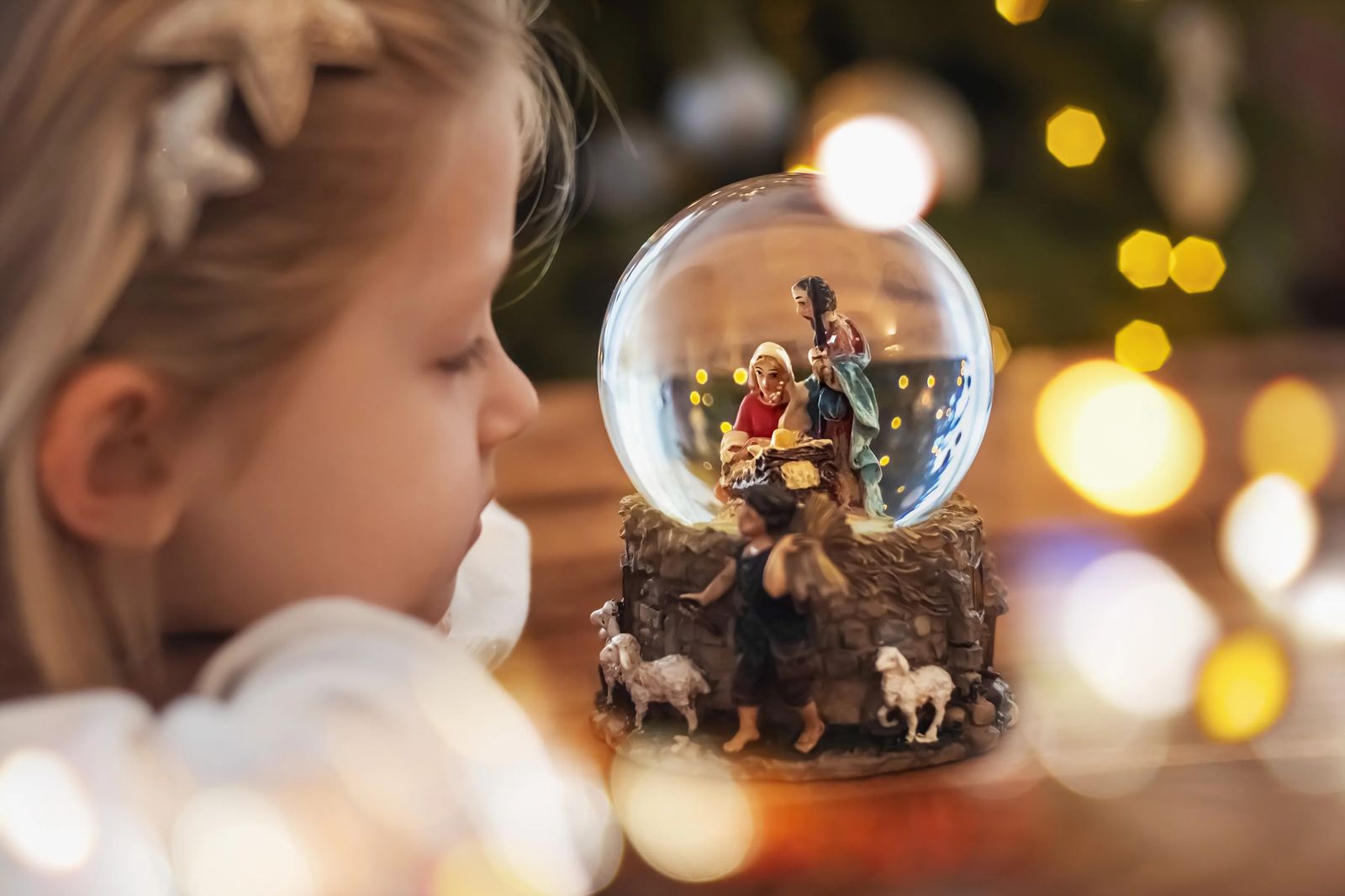Christmas, Credibility and Credulity
Written by Emily and Mary Ellen Maunz
Act 2, Scene 1
Every Christmas, my children and I act out an elaborate and imaginative play. We all pretend there is a jolly, bearded man from the North Pole who flies around in a reindeer-powered sleigh bringing gifts to good little boys and girls. I say “we all pretend” because my kids are actually in on the big secret. You see, I made the choice to be forthright with them whenever they asked for the truth, which they both did at about age five or six. Did I do the right thing? Did I reinforce the message that I can always be relied upon for the truth or did I rob them of Christmas magic at too young an age?
Truth or Consequences

I have nothing but fond memories of Christmas as a child. My parents worked hard to keep the myth of Santa alive and well for all four of us kids. When the older children “figured it out,” we were enlisted to help keep the story alive for the younger ones. For me, Christmas was fun, fantastical and full of magic. My older brother and one of my younger sisters have similar fond memories. But not Addie (my other sister,) as a grown woman, Addie can still recount the intense feelings of hurt and mistrust she felt when she learned that her whole family had been fooling her. And she is not alone; I have now met many people who say they or their children were devastated by such well-meaning pretense from their most trusted loved ones.
Credulity and Credibility
With this in mind, how can parents make Christmas—as well as its memories— enchanting for their kids using the story of Santa Claus? There are careful decisions to be made when we choose how to balance truth and our cultural traditions regarding Christmas. In her book, Spontaneous Activity in Education, Maria Montessori says that the child’s imagination is of utmost importance:
In Anglo-Saxon countries… Christmas is an old man covered with snow who carries a huge basket containing toys for children, and who really enters their houses by night. But how can the imagination of children be developed by what is, on the contrary, the fruit of our imagination? It is we who imagine, not they; they believe, they do not imagine. Credulity is, indeed, a characteristic of immature minds which lack experience and knowledge of realities, and are as yet devoid of that intelligence which distinguishes the true from the false, the beautiful from the ugly, the possible from the impossible.
We can dispel the child’s belief in “the fruit of our imagination” by allowing him to express his or her own imagination in our celebration of Christmas. My solution was to borrow a page from the playbook of a clever friend of mine. She has three precocious children who all asked the Santa question at a very young age. My friend truthfully explained that while Santa is fictitious, the Santa story is still an important and fun part of the Christmas tradition for both parents and children. Therefore, the family would continue to make-believe.
A few years later, my children reacted very similarly to hers. They are tickled to be “in the know” but more than glad to play the game. There is a lot of grinning and winking that goes on around here this time of year. Sometimes, we’re not sure who is fooling whom, as we are each role-playing for the others, but it really doesn’t matter. I see my kids showing genuine consideration for each other, and we have established our own family traditions and memory-making experiences for the holiday season. You can be as creative as you can conceive in your activities to keep your child’s imagination vibrant and alive. Throw in a few amazing meals with friends and it will look a lot like Christmas!
The Christian celebration of Christmas includes the traditional appreciation of the birth of Jesus as the promise of hope for mankind. This was Montessori’s perception as well. Her true goals of peace and the reconstruction of society through the liberation of man’s potential are expressed through her vision of the role of the child:

If we wish to set about a sane psychical rebuilding of mankind, we must go back to the child. But in the child we must not merely see the son, the being in whom our responsibilities are centered: we must consider the child in himself and not in his relation to us, which is that of dependence. We must turn to the child as to a Messiah, an inspired being, a regenerator of our race and of society. We must succeed in effacing ourselves till we are filled with this idea, then go to the child, as the wise men of the East, loaded with power and with gifts and led by the star of hope.
Truly children are “inspired beings” when they are approached this way. If we can empower them with our “star of hope,” they will discover the true meaning of Christmas in their hearts.




















